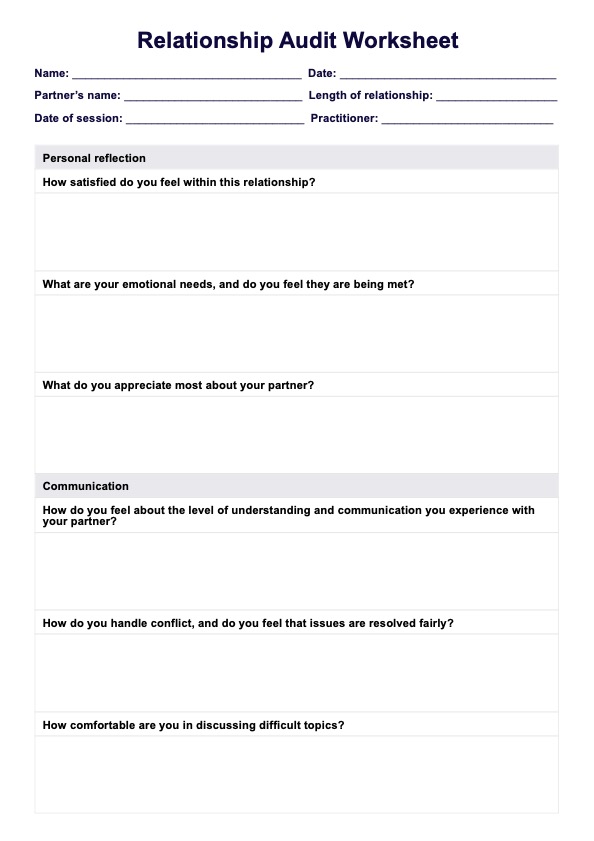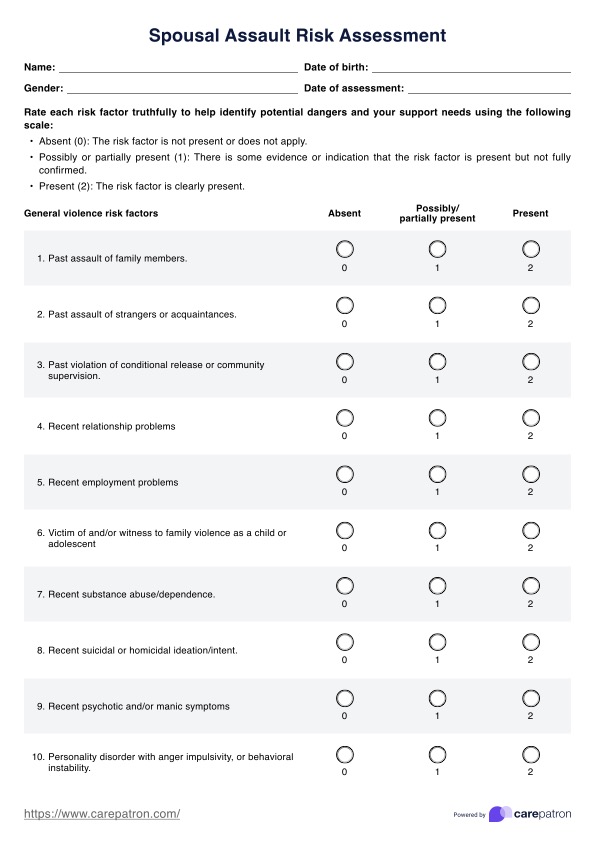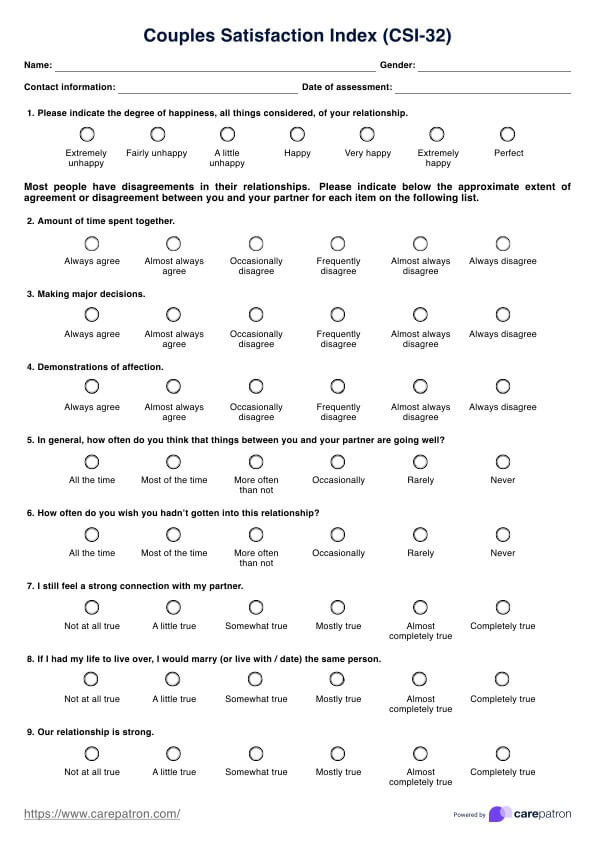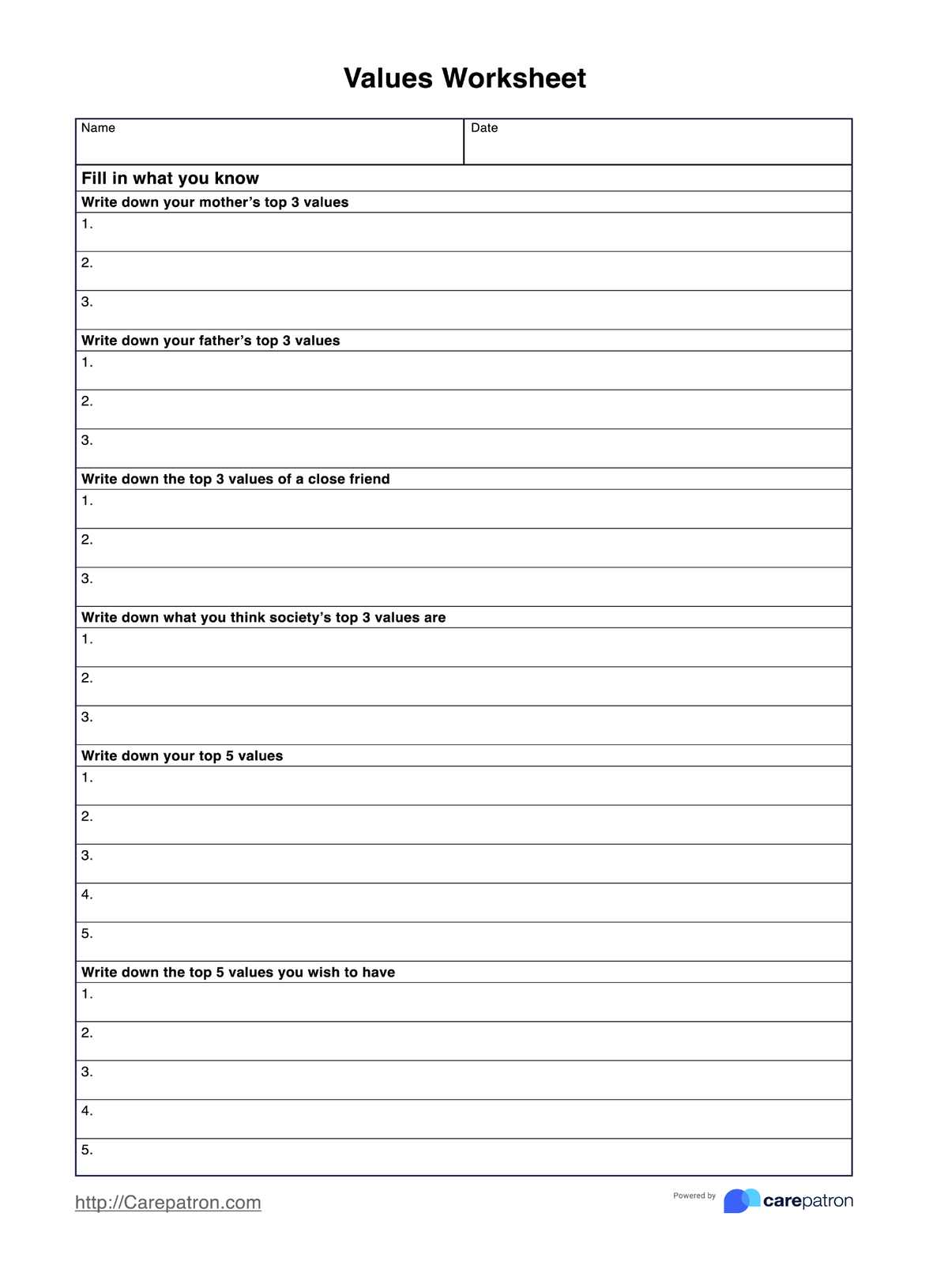Healthy Relationships Wheel
Use the Healthy Relationships Wheel to assess and promote balanced, respectful relationships, fostering long-lasting and healthy connections.


What is a Healthy Relationships Wheel?
A Healthy Relationships Wheel is a powerful visual aid that encapsulates the essential elements for fostering healthy and harmonious relationships. This diagram is a counterpoint to the power and control wheel, which outlines abusive and violent behavior patterns.
Each segment of this Healthy Relationships Wheel represents a distinct aspect of relationship equality. From negotiation and fairness to trust and economic partnership, these segments form a holistic view of what a balanced relationship should entail. The coordination between the equality and power and control wheel helps define a non-abusive relationship. It is a visual reminder that healthy relationships require ongoing effort, understanding, and commitment from all involved parties.
Educators, therapists, counselors, and even individuals can use it as a guide to recognize where improvements might be needed or to reinforce positive behaviors that are already present. The Healthy Relationships Wheel has become a baseline of educational programs and therapeutic practices dealing with relationships, family dynamics, and domestic violence prevention.
Healthy Relationships Wheel Template
Healthy Relationships Wheel Example
What are the wheel components?
This Healthy Relationship Wheel exhibits eight components of a non-violent relationship. These are the following:
1. Negotiation and fairness
Negotiation and fairness emphasize the importance of mutual understanding and compromise. They focus on a couple working together to find solutions, ensuring that decisions are made fairly, and recognizing the needs and wants of both partners. It also focusing on the idea of accepting change and agreeing to disagree.
2. Non-threatening behavior
Here, the focus is on creating a safe environment where both partners can express themselves and their opinions freely without fear of intimidation or harm. It underscores the importance of behaving in ways that make each partner feel secure and respected.
3. Respect
Respect is essential in any relationship. It encourages partners to value each other's feelings, thoughts, and choices even when they are different. Listening actively and treating each other with dignity forms the core of this stage.
4. Trust and support
This entails supporting and respecting each other's goals, showing faith in each other's decisions, and offering encouragement. It is also about respecting and being open to friends and family of the partner. Trust and support lay the groundwork for a deeper emotional connection.
5. Honesty and accountability
Honest communication and taking responsibility for one's actions are vital. It includes being open with feelings, admitting mistakes, and striving to meet mutual expectations.
6. Responsible parenting
If applicable to a couple, this component guides them in sharing parental responsibilities, emphasizing the importance of acting as positive role models and prioritizing what's suitable for their children.
7. Shared responsibilities
This focuses on the equitable division of work, whether it be household chores or other shared responsibilities. It encourages cooperation and a balanced contribution from both partners. It further encompasses unity when making decisions and taking time to do things for each other.
8. Economic partnership
Economic partnership involves making financial decisions together and ensuring that both partners have an equal say and benefit from financial arrangements.
How does it work our template work
The Healthy Relationships Wheel is a comprehensive framework for assessing and discussing the dynamics of relationships. Its primary function is to offer a holistic overview of the crucial elements of a healthy relationship and provide guidance on nurturing these aspects. Here's a step-by-step guide on how to utilize the Healthy Relationships Wheel:
Step 1: Access the template
Click "Use template" from this guide to access and edit the template within the Carepatron app before you can print or send it as an online worksheet. You can also click on "Download" for a fillable PDF template.
Step 2: Examine the Healthy Relationships Wheel
To grasp the concept of the Healthy Relationships Wheel, you need to understand its structure. Each wheel segment symbolizes an essential element of a healthy relationship. Spend time familiarizing yourself with these segments and what they represent, and explain them to your clients.
Step 3: Reflecting on each component
Once you grasp the wheel's sections well, it's time to guide clients to reflect on each aspect of their relationship's context. Tell them to examine the presence or absence of each element and consider the balance between them. Remind them that healthy relationships are not about perfection but about striving for balance and mutual respect. Give this wheel a spin and see how it can help improve relationships and eliminate abusive behavior.
When would you use this Healthy Relationship Wheel?
Given its versatility and comprehensive nature, it can be practical in numerous contexts, such as:
Domestic violence prevention
Organizations that prevent domestic violence can use the Equality Wheel and the Healthy Relationships Wheel to show the contrast between abusive and healthy relationships. By clarifying these distinctions, individuals can better recognize unhealthy patterns and work toward prevention, fostering hope and a sense of responsibility.
Counseling sessions
Therapists and counselors employ the Healthy Relationships Wheel as a significant tool to facilitate dialogues with their clients. It helps them find patterns of both healthy and unhealthy behaviors within their relationships. This tool is a foundation for conversations about mutual respect, Trust, and other critical aspects of a well-balanced relationship. Therapists can use the wheel to guide clients toward recognizing unhealthy patterns, avoiding abuse, and fostering positive change.
Education
The Healthy Relationships Wheel is a valuable resource for teachers and educators. They use it as a teaching aid to impart lessons about the importance of healthy relationships. The wheel's visual representation of various relationship components gives students an accessible and understandable model, enhancing their grasp of these concepts. Teachers can also use this to explain to students how their behavior affects relationships during feedback sessions.
Personal reflection
The Healthy Relationships Wheel is incredibly useful. Individuals can leverage this tool to evaluate their relationships. It can act as a reflective guide, helping people assess the presence and balance of key relationship components. This introspection often leads to necessary improvements, fostering personal growth and healthier relationships.
Commonly asked questions
Individuals, therapists, counselors, and educators use the Healthy Relationships Wheel.
The wheel is used to assess personal relationships' health and educate individuals about relationship dynamics.
The wheel is used as a visual tool to represent different aspects of a healthy relationship and to facilitate discussions and self-reflection about personal relationships.


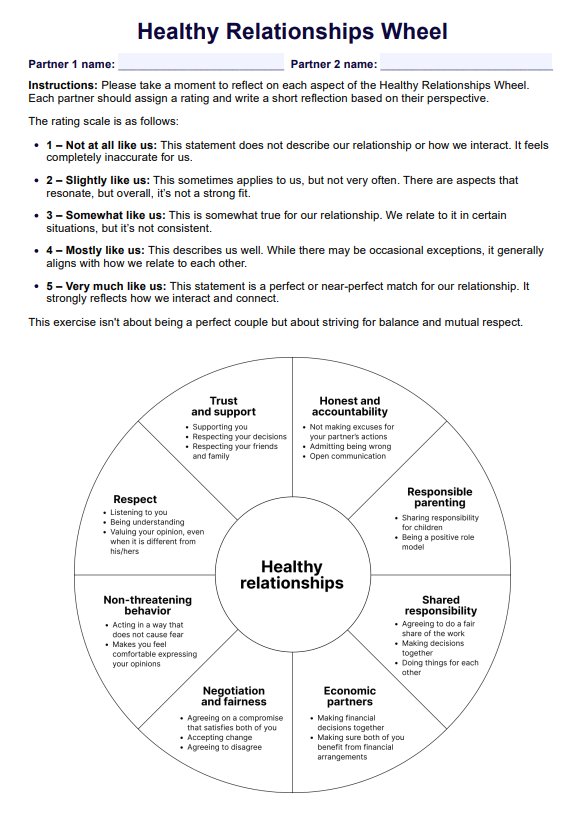
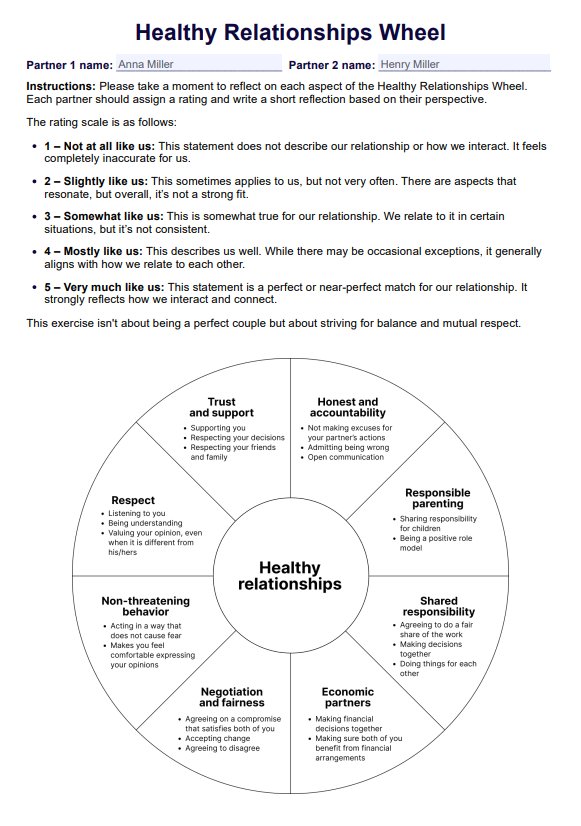

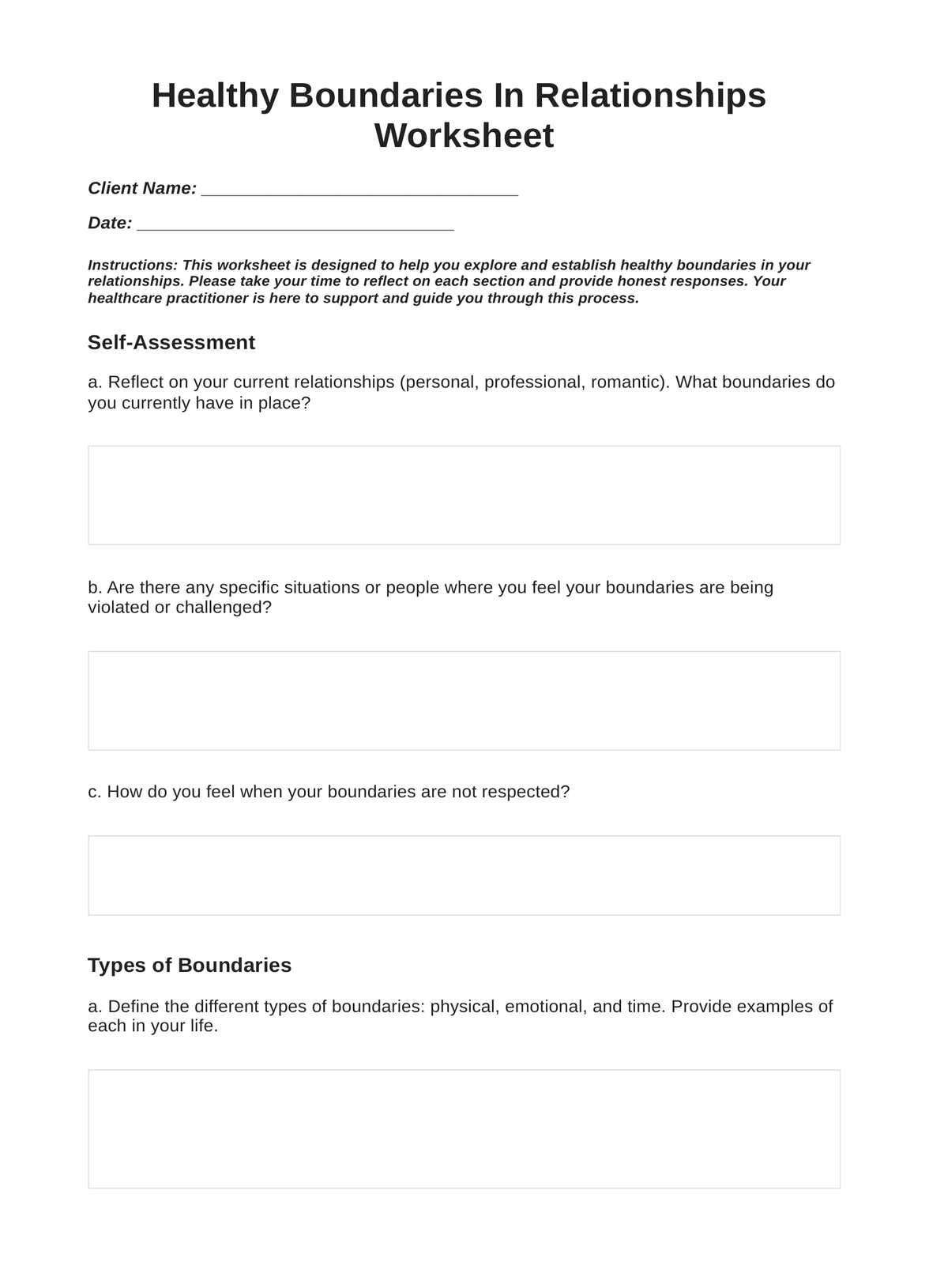












-template.jpg)


